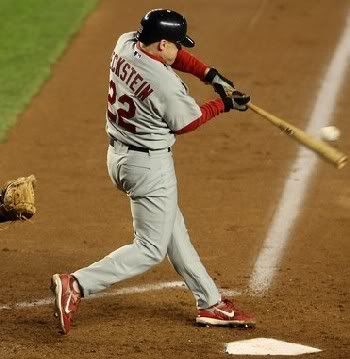My J.V coach keeps telling me to drive my elbow and hands down to the ball. Whenever I attempt to do this I get bad results. Can any one explain what this means, how to do it, and how to practice it? Thank you
Original Post
Replies sorted oldest to newest
quote:Originally posted by Kingjamesp:
My J.V coach keeps telling me to drive my elbow and hands down to the ball. Whenever I attempt to do this I get bad results. Can any one explain what this means, how to do it, and how to practice it? Thank you
quote:Originally posted by Kingjamesp:
Thats exactly what I wish I could have said to my coach, but I don't want to ride the bench all season.
quote:Originally posted by Kingjamesp:
Powertoallfeailds, from your experience if a coach is set on teaching every one to hit one perticular style, regardless of the players past success, would I be able to do what they say during practice but then go back to my style during the game, assuming I had good results, without the coach noticing or caring? The difference isn't huge it's just how much rotation back, weight shift, and the stride with the front foot.
quote:since your hands start in a relatively high position you must drive down to the ball. Some kids have a problem dropping their back elbow which will make their lead elbow come out high. Drive your lead elbow towards your hip until you lever out. Your hands follow the same path.
quote:I think the book say's full extension comes after impact. The swing starts down then to level at impact. Naturally the lead elbow is higher than the back elbow. When I say dropping the elbow It is really the back shoulder that drops causing the front elbow to get too high and a uppercut swing results.
quote:Originally posted by danocaster:
I've seen the discussions about this, and I'm not sure I really understand Linear vs Rotational.
but..... don't most of these guys look like they're swinging down to the ball?
http://www.recruit.hittingillu...com/RunningStart.htm
quote:Originally posted by Ozone:
They use to say ..start the knob to the contact point, which is very similar to drive your hands to the ball. Of course your hands come back inside if you keep your back elbow in.
quote:The old towel drill still comes in handy.




quote:Q- the bat head starts above the head, yes. and once swing is going, the hands go flat(or inverted really) which brings the bat head down BEHIND the hitter as it makes a shallow "U" shape (to start coming up) to get on the path of the ball coming in... but bat head works UP from that point, to the point of impact, as good hitters are matching the to paths (ball/bat head)...